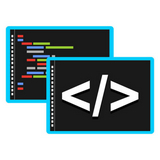golang并发编程的核心是goroutine和channel,它们提供了高效且易于理解的并发实现方式。1. goroutine是轻量级线程,使用go关键字启动,可并发执行任务;2. channel用于goroutine之间的安全通信与同步,支持数据传输与阻塞控制;3. select语句允许监听多个channel,实现非阻塞通信;4. sync包提供mutex和waitgroup等同步原语,确保共享资源安全访问与多goroutine协同;5. 避免goroutine泄露的方法包括使用context控制生命周期、带缓冲的channel、确保channel有接收者及设置超时机制;6. 常见并发错误如数据竞争、死锁、活锁、饥饿和panic可通过合理使用锁、原子操作、recover及资源管理避免;7. 选择并发模式需考虑任务类型、依赖关系、系统资源和性能需求,常见模式包括worker pool、pipeline、fan-out/fan-in;8. 性能调优可借助pprof分析工具、减少锁竞争、避免频繁内存分配、使用带缓冲channel、合理设置gomaxprocs及编写benchmark测试。

Golang并发编程的核心在于goroutine和channel,它们提供了一种高效且易于理解的方式来编写并发程序。通过goroutine,你可以启动成千上万个并发执行的轻量级线程,而channel则提供了这些goroutine之间安全通信的机制。

goroutine和channel结合使用,可以构建出强大的并发模型,有效地利用多核CPU资源,提升程序的性能和响应速度。

解决方案
立即学习“go语言免费学习笔记(深入)”;
Golang实现并发编程主要依赖于以下几个关键要素:

Goroutine: Goroutine是Go语言中的轻量级线程,它比传统线程更轻量级,创建和销毁的开销更小。你可以使用
go
package main
import (
"fmt"
"time"
)
func say(s string) {
for i := 0; i < 5; i++ {
time.Sleep(100 * time.Millisecond)
fmt.Println(s)
}
}
func main() {
go say("world")
say("hello")
}在这个例子中,
go say("world")say
say("hello")Channel: Channel是Go语言中用于goroutine之间通信的管道。你可以通过channel发送和接收数据,从而实现goroutine之间的同步和数据共享。
package main
import "fmt"
func sum(s []int, c chan int) {
sum := 0
for _, v := range s {
sum += v
}
c <- sum // 将sum发送到channel c
}
func main() {
s := []int{7, 2, 8, -9, 4, 0}
c := make(chan int)
go sum(s[:len(s)/2], c)
go sum(s[len(s)/2:], c)
x, y := <-c, <-c // 从channel c接收
fmt.Println(x, y, x+y)
}在这个例子中,
sum
c
c
Select:
select
package main
import (
"fmt"
"time"
)
func fibonacci(c, quit chan int) {
x, y := 0, 1
for {
select {
case c <- x:
x, y = y, x+y
case <-quit:
fmt.Println("quit")
return
}
}
}
func main() {
c := make(chan int)
quit := make(chan int)
go func() {
for i := 0; i < 10; i++ {
fmt.Println(<-c)
}
quit <- 0
}()
fibonacci(c, quit)
}在这个例子中,
fibonacci
c
c
quit
fibonacci
Sync包:
sync
package main
import (
"fmt"
"sync"
"time"
)
var (
counter int
lock sync.Mutex
)
func increment() {
lock.Lock()
defer lock.Unlock()
counter++
fmt.Println("Counter:", counter)
}
func worker(wg *sync.WaitGroup) {
defer wg.Done()
for i := 0; i < 5; i++ {
time.Sleep(100 * time.Millisecond)
increment()
}
}
func main() {
var wg sync.WaitGroup
for i := 0; i < 3; i++ {
wg.Add(1)
go worker(&wg)
}
wg.Wait()
fmt.Println("Final Counter:", counter)
}
这个例子展示了如何使用
sync.Mutex
counter
sync.WaitGroup
Goroutine泄露如何避免?
Goroutine泄露是指启动的goroutine没有正常结束,导致资源占用,最终可能耗尽系统资源。避免Goroutine泄露的关键在于确保每个goroutine最终都能退出。
使用Context: 使用
context.Context
context.WithCancel
context.Done()
cancel()
package main
import (
"context"
"fmt"
"time"
)
func worker(ctx context.Context) {
for {
select {
case <-ctx.Done():
fmt.Println("Worker stopped")
return
default:
fmt.Println("Worker running")
time.Sleep(time.Second)
}
}
}
func main() {
ctx, cancel := context.WithCancel(context.Background())
go worker(ctx)
time.Sleep(3 * time.Second)
cancel() // Cancel the context, stopping the worker
time.Sleep(time.Second) // Wait for the worker to stop
fmt.Println("Main function finished")
}
在这个例子中,
worker
ctx.Done()
main
cancel()
ctx.Done()
worker
使用带缓冲的Channel: 当goroutine需要向channel发送数据,但没有接收者时,会导致goroutine阻塞。使用带缓冲的channel可以避免这种情况。
package main
import (
"fmt"
"time"
)
func producer(ch chan int) {
for i := 0; i < 10; i++ {
ch <- i // Send without blocking (buffer size is 10)
fmt.Println("Produced:", i)
}
close(ch) // Close the channel when done
}
func consumer(ch chan int) {
for val := range ch {
fmt.Println("Consumed:", val)
time.Sleep(time.Millisecond * 500)
}
}
func main() {
ch := make(chan int, 10) // Buffered channel
go producer(ch)
go consumer(ch)
time.Sleep(5 * time.Second) // Allow time for operations to complete
fmt.Println("Main finished")
}
在这个例子中,
producer
ch
consumer
ch
close(ch)
consumer
确保所有channel都有接收者: 如果goroutine向一个没有接收者的channel发送数据,会导致goroutine永久阻塞。确保每个channel都有一个或多个接收者。
使用select
select
package main
import (
"fmt"
"time"
)
func fetchData(ch chan string) {
time.Sleep(2 * time.Second) // Simulate a long-running operation
ch <- "Data received"
}
func main() {
ch := make(chan string)
go fetchData(ch)
select {
case data := <-ch:
fmt.Println("Received:", data)
case <-time.After(1 * time.Second):
fmt.Println("Timeout: No data received")
}
fmt.Println("Main finished")
}
在这个例子中,
fetchData
ch
main
select
ch
Golang并发编程的常见错误有哪些?
sync.Mutex
sync/atomic
recover
defer
如何选择合适的并发模式?
选择合适的并发模式取决于具体的应用场景和需求。以下是一些常见的并发模式:
Worker Pool: Worker Pool模式用于限制并发执行的goroutine数量,防止系统资源被耗尽。
package main
import (
"fmt"
"sync"
"time"
)
func worker(id int, jobs <-chan int, results chan<- int) {
for j := range jobs {
fmt.Println("worker", id, "processing job", j)
time.Sleep(time.Second)
results <- j * 2
}
}
func main() {
const numJobs = 5
jobs := make(chan int, numJobs)
results := make(chan int, numJobs)
for w := 1; w <= 3; w++ {
go worker(w, jobs, results)
}
for j := 1; j <= numJobs; j++ {
jobs <- j
}
close(jobs)
for a := 1; a <= numJobs; a++ {
fmt.Println(<-results)
}
}
在这个例子中,我们创建了一个包含3个worker goroutine的worker pool。每个worker goroutine从
jobs
results
Pipeline: Pipeline模式用于将一个任务分解为多个阶段,每个阶段由一个或多个goroutine并发执行。
package main
import (
"fmt"
)
func gen(nums ...int) <-chan int {
out := make(chan int)
go func() {
for _, n := range nums {
out <- n
}
close(out)
}()
return out
}
func sq(in <-chan int) <-chan int {
out := make(chan int)
go func() {
for n := range in {
out <- n * n
}
close(out)
}()
return out
}
func main() {
// Set up the pipeline.
c := gen(2, 3)
out := sq(c)
// Consume the output.
fmt.Println(<-out) // 4
fmt.Println(<-out) // 9
}
在这个例子中,
gen
sq
main
gen
sq
Fan-out, Fan-in: Fan-out模式用于将一个任务分发给多个goroutine并发执行,Fan-in模式用于将多个goroutine的结果合并到一个channel中。
package main
import (
"fmt"
"sync"
)
func fanOut(input <-chan int, n int) []<-chan int {
cs := make([]<-chan int, n)
for i := 0; i < n; i++ {
cs[i] = pump(input)
}
return cs
}
func pump(input <-chan int) <-chan int {
c := make(chan int)
go func() {
for v := range input {
c <- v * 2
}
close(c)
}()
return c
}
func fanIn(inputChannels ...<-chan int) <-chan int {
out := make(chan int)
var wg sync.WaitGroup
wg.Add(len(inputChannels))
for _, in := range inputChannels {
go func(in <-chan int) {
for v := range in {
out <- v
}
wg.Done()
}(in)
}
go func() {
wg.Wait()
close(out)
}()
return out
}
func main() {
in := make(chan int)
go func() {
for i := 0; i < 10; i++ {
in <- i
}
close(in)
}()
// Fan-out to two channels
c1 := fanOut(in, 2)
// Fan-in the results
out := fanIn(c1...)
for v := range out {
fmt.Println(v)
}
}
在这个例子中,
fanOut
pump
pump
fanIn
pump
选择合适的并发模式需要考虑以下因素:
如何进行并发程序的性能调优?
pprof
GOMAXPROCS
GOMAXPROCS
go test -bench=.
总之,Golang的并发编程模型提供了强大的工具来构建高性能的并发程序。理解goroutine、channel、select、sync包以及各种并发模式,可以帮助你编写出高效、可靠的并发程序。同时,注意避免常见的并发错误,并使用性能分析工具进行调优,可以进一步提升程序的性能。
以上就是Golang如何实现并发编程 Golang并发编程详解的详细内容,更多请关注php中文网其它相关文章!

编程怎么学习?编程怎么入门?编程在哪学?编程怎么学才快?不用担心,这里为大家提供了编程速学教程(入门课程),有需要的小伙伴保存下载就能学习啦!




Copyright 2014-2025 https://www.php.cn/ All Rights Reserved | php.cn | 湘ICP备2023035733号